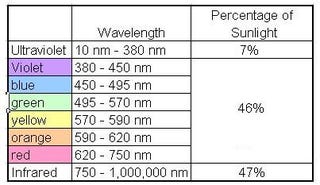New Molecule Harnesses 50 Percent More Solar Spectrum Than Ever Before


- A new single molecule can absorb the full spectrum of sunlight and turn it into valuable hydrogen.
- Freeing hydrogen to use as fuel is a major science holy grail in the 21st century.
- Costly, corrosion-resistant rhodium molecules can hopefully be swapped for something more economical.
Scientists have discovered a molecule that can absorb more of the full spectrum of solar energy than ever before. The same molecule is also an effective catalyst to make clean energy in the form of hydrogen.
The new form of self-contained micro-solar panel is made of rhodium, a wildly rare and precious metal coveted by car makers for its role in catalytic converters. Researchers assembled rhodium atoms into a scaffold structure, a term more often used in drug research. The way the molecules are bonded leaves room for sunlight to be “saved,” turning two photons from the sun into two electrons. Since the chemical reaction is direct, even slow or sparse photons from low-energy sunlight are captured.
Single-molecule catalysts aren’t new, but this research team says its system is 25 times more efficient, both because the molecule is just a better catalyst and because it absorbs the full spectrum of light. Hydrogen is extremely popular in alternative energy research, but catalyzing it economically and in large quantities has been a challenge. The more options researchers find and fine-tune, the better the odds of finding a feasible everyday way to make hydrogen.
Why does absorbing the full spectrum of light make such a difference? Well, existing solar panels absorb what looks like a lot of the spectrum: from violet light to red light, which is the whole amount visible to the human eye. But the same way we have to protect ourselves and our skin from ultraviolet light we can’t see, we have to remember to include ultraviolet as part of any discussion about harvesting solar energy. The same is true of infrared at the other end of the spectrum.

Visible light, from a human perspective, is less than half the sun’s total output. To keep up the analogy to UV rays, a solar panel that collects from less than half of the spectrum is like a sunscreen that doesn’t block UVB as well as UVA. It could be a lot better. And while this collecting molecule did well with low-energy light, which is one of the edge cases for solar collection, it could also do well with high-energy light—a way to absorb many more photons in a much shorter time.
Of course, a catalyst that requires the world’s most expensive precious metal doesn’t sound, at first blush, like a way toward sustainable hydrogen. But the researchers hope the structure of the catalytic molecule can translate to other materials. Part of the appeal of rhodium is that it resists oxidizing and corrosion, so the researchers could, for example, dilute it in an acid bath they could shine LEDs on to generate hydrogen.
If they can use other materials for the reaction itself, the team may also be able to extend the “lifespan” of the reaction, which they say is one of the big next steps toward turning an exciting research discovery into a potential application.
From: popularmechanics.com/science/a30646417/rhodium-molecule-solar-energy/

